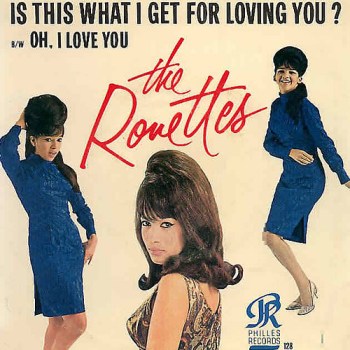
Bump, bump-bump, whack, bump, bump-bump, whack. Pounding like King Kong’s heartbeat at the top of the Empire State Building, Hal Blaine’s drum intro to “Be My Baby” signaled the anticipatory heat of teen rapture. Written by the young husband-wife team of Jeff Barry and Ellie Greenwich and performed by the Ronettes, with Veronica “Ronnie” Bennett as the imploring lead singer, “Be My Baby” represented the apogee of producer Phil Spector’s “Wall of Sound” singles with New York City girl groups. (Spector and Bennett were married from 1968 to 1974, decades before his murder conviction in 2009.) When Bennett pleads “So won’t you be/ Be my, be my baby?,” she makes erotic yearning seem almost sacred and maternal.
The Wall of Sound was a fuzzy, congested, massive sonic assault designed for 45-r.p.m. record players and AM car radios. Summoning an army of musicians — backup singers, guitarists, a few horn men, percussionists with their castanets, maracas and tambourines, plus three or four pianists banging away simultaneously and maybe a string section — to his cramped, beloved Gold Star studio in L.A., the producer would keep noodling and cajoling until he heard the magic that was already in his head. By the time he was done, the number exploded with a sound so dense and intense that a record needle could literally jump out of the grooves. Spector’s target audience of adolescents got the same vinyl jolt. Even today, it’s impossible to listen to “Da Doo Ron Ron,” “He’s a Rebel,” “Then He Kissed Me,” “Not to Young to Get Married” — or “Be My Baby” — without feeling elated, intoxicated and 15.
(Browse the All-TIME 100 Songs and more than 100 other pop culture lists on TIME’s Populist iPad app)
[youtube=http://www.youtube.com/watch?v=QzhbGaCwBzs]

